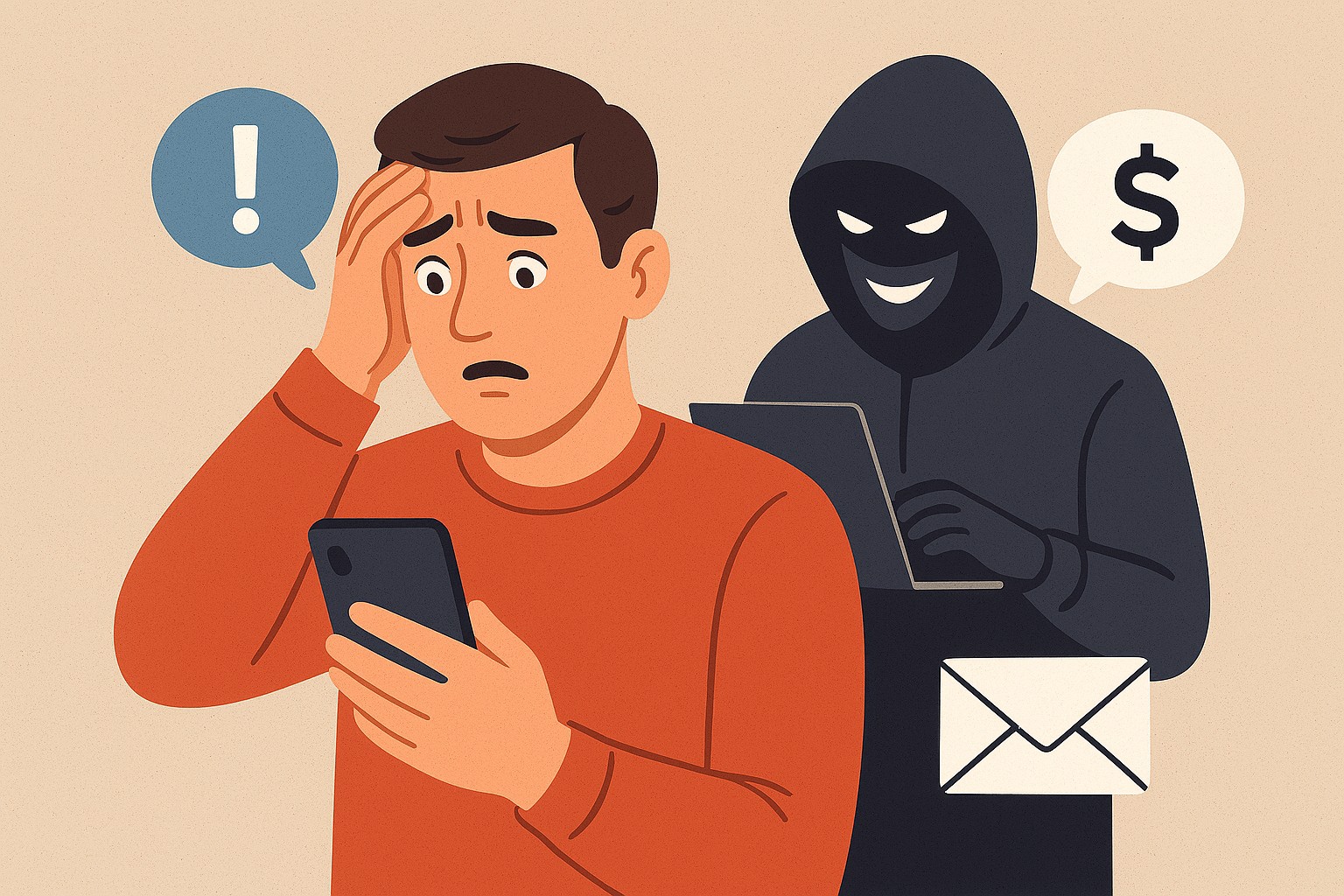I’d like to preface this article with a disclaimer that I’m not a Cybersecurity expert. I am in the IT industry so some of this information comes across in my day to day but I don’t claim to know everything. That said, I am publishing this article in the hopes it is used for education and to help protect people from bad actors. With the holidays approaching, may give you something to share with your family that aren’t very tech savvy.

President Reagan popularized the phrase “Trust but verify”. Unfortunately, we don’t live in the 80’s anymore and with the rise of Computers, bad actors have made us flip the phrase to “Verify before Trust”. Throw on top the use of AI and Automation, it’s hard for even security researchers to know what is real or fake let alone Grandma and Grandpa who grew up in a simpler time where you trusted everyone.
To be clear, I’m not shaming anyone in this article for falling for Scams. They are getting better and better every day and the gap of knowledge around computer systems is getting wider. If we all share knowledge and educate each other, hopefully that gap shrinks and less people fall in.
I’m going to start with 4 types of Scams, give some information on how to identify it as a scam and what you should do to help protect yourself. This is by no means all the ways Scams are happening but hopefully this article will help even one person not get hurt.
AI-Enhanced Impersonation (Deepfake)
How it works: A scammer uses online content (social media) and AI to generate a realistic impersonation of a loved one. They then call the person they are targeting and use the AI generated audio/video to interface with the person. They then act on the part of your brain that is reactionary, saying they are in trouble and need help (ex. bail money). Then prompt you to send money in some way that can’t be stopped or tracked (ex. wire transfer or gift cards). By getting you to react quick, your brain doesn’t have time to process that this could be a scam or that the audio/video doesn’t look quite right.
Key signs to identify: The quality of these AI generated impersonations has come a long ways but they still aren’t perfect. Listen for slightly off timing/intonation in the audio. If it’s a video, look for any type of watermark on the sides of the screen.
What can I do to protect myself:
Safe Word – You should setup a safe word with your family. This is a random word that wouldn’t normally come up in conversation. Only your trusted inner circle of family should know this word. If you have kids, I recommend different words for each child in case one accidently lets it slip. In the event that a scam like this happens, ask the person for the safe word. This is affectively “password protecting” your communication.
Call them back – Sometimes they will spoof the number they are calling from to look like the person but really its a totally different number. Tell them you will call them back and then hang-up. Then go into YOUR contacts and call the person back, don’t redial the original number.
SMS and Robocall Spoofing
How it works: Scammers will send text messages or automated calls that appear to come from legitimate sources (ex. your bank, the government, etc.). For example they could pose as your bank and send you an alert that you have overdrawn on your account and to call this number right away to “fix” this issue before your account is closed. Again, causing you to react without thinking the situation through. They could also send a link to the “Banks” website that almost looks correct but might be one letter off. Once you go to this bad website – they take your login information, login to the real bank website as you and transfer money.
Key signs to identify: Many institutions know that these scams are happening now and are no longer communicating in the way that scammers are by sending links or communication outside an app or website that they control.
What can I do to protect myself:
Verify the information – Call them directly! Go to Google, type in the name of the institution, call the number on Google and verify the issue is real. The key is that you are the one initiating the communication not a random person you don’t know off the street.
Never Click Links – If you get a link in an email/text message, always go directly to the website or app as you normally would to access your information.
Don’t answer the phone – The easiest way to not get scammed is to not communicate with the scammers. Personally, I don’t answer any unknown numbers that call me. If its someone I know or a business I routinely communicate with, I’ll add them as a contact. If the call is important, they will leave a voicemail and ask you to call them back. Speaking directly at the older generations here…It’s ok if you don’t answer the phone, no one will take it personally. No one under the age of 30 nowadays talks on the phone anyways (haha).
Remote IT Help
This one has been around for a while but is still used today by scammers because it works.
How it works: Usually, this is one where some kind of website popup or virus gets onto your computer. It might look like a Virus scanning software which scans your PC and “Oh NO!” there are hundreds of virus and you need to call this number or email to get help fast. The person calls the number or emails and the scammer say they can help you right away, just download this remote assistant application. They then remote onto your computer and ask for “up front payment” either by bank transfer where they get you to login to your bank account while they are watching to steal bank information or buy gift cards and call them back with the numbers.
Key signs to identify: Close the application/popup and run your own antivirus scan of the PC. Windows Defender is pretty good for this and it’s built into Windows 11. If you want a second opinion, I have always preferred Malwarebytes. Simply install it and run a full system scan.
What can I do to protect myself:
Call your family IT person – Every family has one, I’m my own and pretty much everyone that I knows IT Guy. Don’t let random people around the world have remote access to your computer, so much bad can come from that. Letting them remote into your computer is the same as you doing whatever they want you to do, just easier for them.
No official business accepts Gift Cards as form of payment – True IT businesses often have an invoice system they use to charge their customers or take Credit Card (which have user protection).
Targeting the Elderly
The title of this scam really encompasses a lot of different scams that are all directed at the elderly population that just don’t know any better or have memory issues that affect their judgment. These scammers are the worst of the worst in my opinion.
Examples of these scams:
- Medicare enrollment/replacement – scammers offer “help” switching plans and then steal personal data.
- Fake Medicare refunds or billing errors – scammers claim the person is owed money but need the personals banking details to process the refund.
- Door-to-door sales scams – unlicensed agents pressure seniors into signing forms that give access to medical benefits or personal information.
What can we do to protect them:
Designate Trusted Contacts – Have the senior name one or two trusted family members or advisors who will be contacted about any unusual financial or medical requests.
Financial Safeguards – Work with the bank to set transition alerts, daily transfer limits, and trusted contact on accounts when possible. Consider joint accounts or limited power of attorney arrangements that allow a trusted personal to intervene if suspicious activity appears.
Reinforce to call someone – should make it know often that if they feel pressure or don’t know/understand to call someone in the family they trust to help. They should hang up right away and reach out to this person.
This has just been the start of the list of scams that people out there are using to destroy the lives of good people. Hopefully with education and communication, we can make a dent in this growing problem.
Also, don’t take my recommendations as the only way, there are many different ways to identify these scams and to protect yourself and your loved ones. Bottom line, this was just to get people thinking clearly about the interactions they are having and if something feels off…Verify.
If you made it this far, Thank You and have a Happy Thanksgiving!

